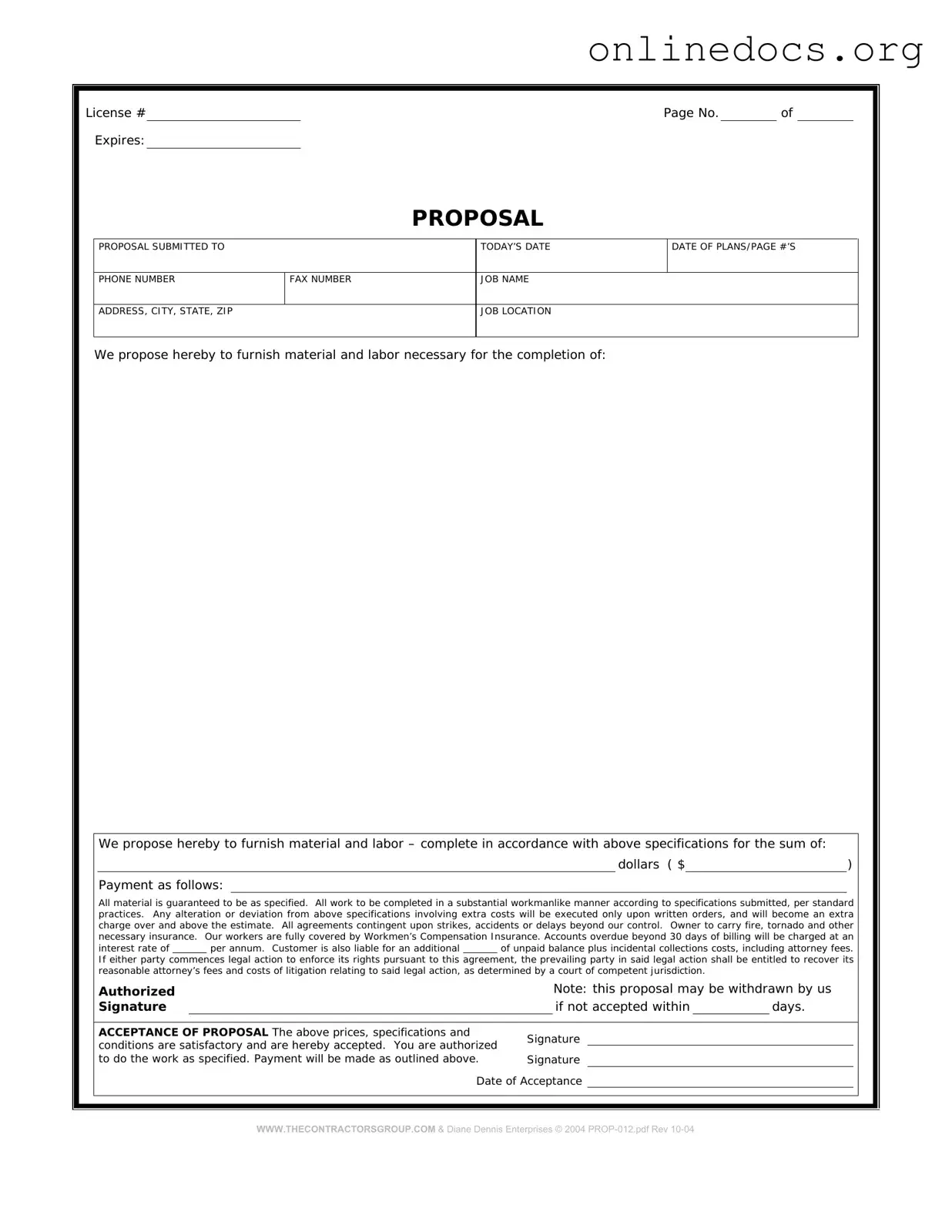Filling out a construction proposal form can seem straightforward, but many individuals make common mistakes that can lead to delays or misunderstandings. One frequent error is failing to provide complete contact information. Without accurate details, potential clients may struggle to reach out for clarifications or further discussions.
Another mistake is overlooking the importance of a detailed project description. A vague description can lead to misinterpretations about the scope of work, which can affect pricing and timelines. Clarity is essential to ensure that all parties have the same understanding of the project requirements.
Many people also forget to include the estimated timeline for project completion. This omission can create confusion regarding deadlines and expectations. Clients appreciate knowing when they can expect work to begin and end, so it’s crucial to provide a clear timeline.
Inaccurate pricing is another common pitfall. Some individuals either underestimate or overestimate costs, which can lead to disputes later on. It’s important to conduct thorough research and calculations to provide a realistic and competitive price.
Not specifying payment terms can lead to significant issues down the line. Clients and contractors should agree on payment schedules, methods, and any deposits required. Failing to outline these terms can result in misunderstandings and potential conflicts.
Another mistake is neglecting to include necessary permits and licenses. Clients often expect contractors to have the appropriate credentials, and failing to mention these can raise red flags. Listing all required licenses can enhance credibility and trust.
Many people also forget to proofread their proposal. Typos and grammatical errors can detract from professionalism and may cause potential clients to question the quality of work. A well-presented proposal reflects attention to detail and seriousness about the project.
Some individuals do not tailor their proposals to the specific client or project. A generic proposal can come across as insincere. Taking the time to customize each proposal demonstrates genuine interest and can significantly increase the chances of winning the project.
Additionally, failing to include references or examples of past work can weaken a proposal. Clients often want to see evidence of a contractor’s capabilities. Including testimonials or case studies can help build trust and showcase expertise.
Lastly, people sometimes forget to follow up after submitting a proposal. A simple follow-up can show professionalism and eagerness. It can also provide an opportunity to address any questions or concerns the client may have.
